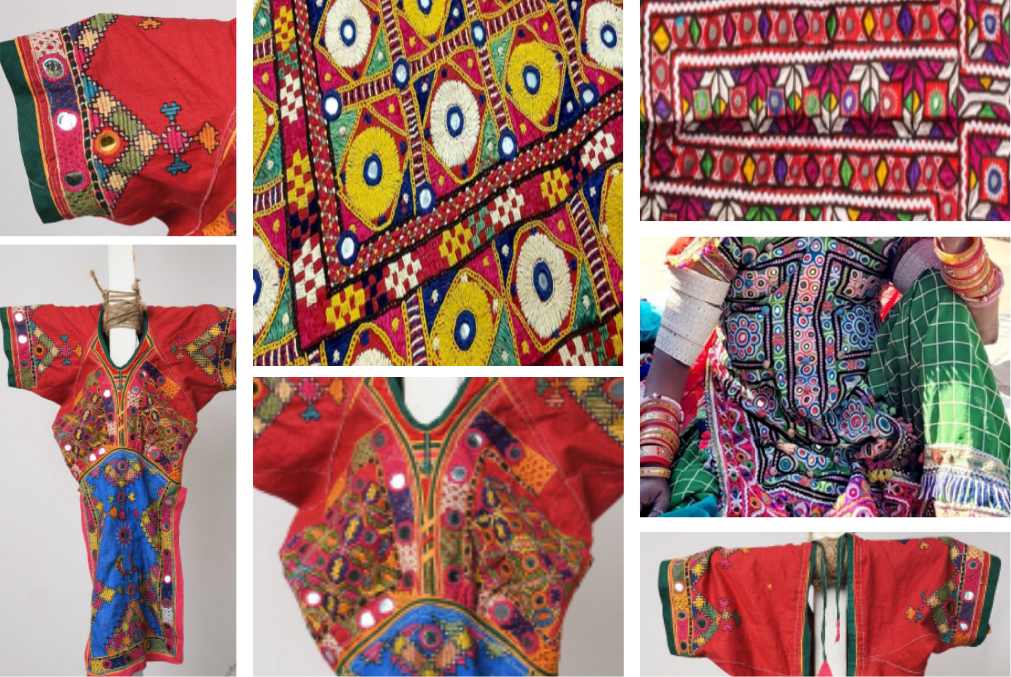Meghwal Embroidery
Other Embroideries

History
The Meghwal women traditionally practiced embroidery for domestic use and their daughters' weddings. After the 1971 India-Pakistan war, many refugees settled in Barmer's rural areas. For these women, embroidery, once a leisure activity, became a means of livelihood, preserving their heritage while supporting their families in their new homeland.
Raw Materials and Tools
Meghwal embroidery uses cotton, silk, and wool threads, along with mirrors, beads, and sequins for embellishments. The primary tools include ari (hook needle), regular needles, wooden frames, and fabric markers. Brightly dyed fabrics serve as the base, bringing Rajasthan’s rich embroidery traditions to life.
Process
The Meghwal community practices diverse embroidery techniques, each with unique motifs and styles. Ari embroidery uses a hook needle for fine geometric patterns. Mukke ka kaam creates a raised, padded effect. Kharek and Paako embroidery feature intricate designs with mirror work. Rabari embroidery, also practiced by some Meghwal artisans, includes bold patterns, appliqué, and mirrors and preserve cultural heritage while enhancing textiles with vibrant embellishments.
Design and Color
Meghwal embroidery features diverse motifs reflecting artistic creativity and cultural heritage. Common designs include floral patterns with roses, lotus, sunflowers, and jasmine, as well as animal motifs like peacocks, elephants, camels, and deer. Birds such as parrots and sparrows, along with geometric shapes like circles, triangles, and squares, enhance the intricate patterns.
Product Range
Meghwal embroidery is used in garments like ghagras, kurtas, and odhanis, as well as home furnishings such as bedspreads, cushion covers, and wall hangings. It adorns accessories like handbags, scarves, and footwear, while also enhancing modern clothing, embroidered art, and footwear like juttis, blending tradition with contemporary fashion.
Additional Information
